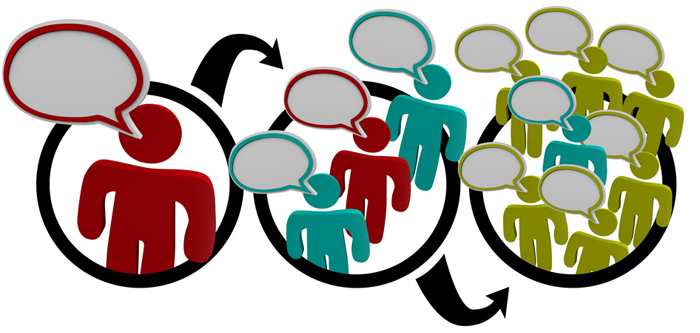
Dr. Ralph F. Wilson explains the term viral marketing as “any strategy that encourages individuals to pass on a marketing message to others, creating the potential for exponential growth in the message’s exposure and influence. Like viruses, such strategies take advantage of rapid multiplication to explode the message to thousands, to millions.” There are a handful of websites that have taken viral marketing to the next level, and have proven themselves wildly successful at sharing content, even content of the most mundane, silly, or questionable quality. Websites such as BuzzFeed and Upworthy are masters at viral marketing. Why have these sites exploded and what are they doing right?
An abundance of “listicles.”
Head over to BuzzFeed right now and you’ll see a huge amount of articles which are presented in a list format: 30 Ways Your Late Twenties are Different Than Your Early Twenties, 10 Times Game of Thrones Proved Itself as the Best Show on Television, 25 Reasons New York is the Greatest City on Earth, 495 Things That Remind You of Growing Up in the 90’s. BuzzFeed has mastered the “listicle”: an article composed of items in list format, generally accompanied by an appropriate or funny picture, GIF, or meme. Within a BuzzFeed article, there is generally very little writing, but the images are the focal point.
Why has this been so successful? With so much to read and discover on the Internet, it seems that quick, light, “easily digestible” articles are all the rage. Statistics now show that articles with numbered lists are far more widely read than articles or blogs without, so the trend continues to build. BuzzFeed has capitalised on this trend, and they’ve become one of the most popular sites on the web, particularly with millennials. This brings us to the next point….
Marketing to the right crowd.
BuzzFeed is clearly pandering to readers in their teens, twenties, and perhaps early thirties, with the bulk of readers likely falling in the 20-27 age group. They’ve been successful at aiming their content to this crowd, because the listicles are all very relatable to this group. BuzzFeed really uses pop culture to its advantage, and this age group, typically the most in tune with current pop culture, has fallen in line. BuzzFeed succeeds by constantly pushing pop culture references, and writing and rewriting articles that strongly appeal to young adults and the things they know and love.
Shocking “read more” headlines.
Upworthy appeals to a similar crowd, though it probably has a wider mass appeal. Upworthy tends to produce a great deal of video content, which, like BuzzFeed, is simpler to consume for the average Internet scourer. How Upworthy draws you in, however, is by making a statement, and then suggesting you’ll be shocked, saddened, or in disbelief of what you’re about to see. These headlines and captions pull you in, making their links irresistible to clicks. You want to see what is so surprising or baffling or heart-wrenching, so you check it out. Upworthy seems to be wildly successful at gathering views.
Easy sharing format.
These simple presentation styles used on both BuzzFeed and Upworthy lend themselves to simple sharing. If you see a moving video on Upworthy, you may be likely to share it on Facebook or Twitter or other social media, encouraging your friends to view and have the same experience. Upworthy and BuzzFeed have buttons and link systems that make sharing SO simple, that it almost seems silly not to. Because they make it easy to share their content, it is that much easier to make that content go viral. And, because these sites appeal to a mass audience, their readers/viewers are eager to share these things with their peers, whom they know will relate.
Humour and emotion.
BuzzFeed is a fun, light-hearted site. Though you can catch the occasional news piece, BuzzFeed is famous for those GIF-packed listicles that are entirely likely to make you laugh. BuzzFeed succeeds at providing this humour to its readers, and this definitely keeps them coming back for more. Because the listicles keep to a predictable format, this also lets readers know what to expect, and provides a consistent, reliable humour.
Upworthy tends to rely more on emotion, often focusing on more serious issues, or sharing “touching” content, like reunions, emotional proposals, or videos about social issues. Though not humourous, Upworthy maintains a consistency in their production of emotionally-charged material that warms your heart or makes you think. The viewers/readers can count on this, and know that there will be a happy video to be watched on the site. Because they’ve seen previous Upworthy content, they are more likely to watch again for that similar emotional release.
Taking Over
Both BuzzFeed and Upworthy have been highly successful at viral marketing because they identified a niche, and stuck to it. BuzzFeed may be criticised for producing “fluff” or questionable journalism, but they’ve never claimed to be a thought-provoking news source. Both sites are doing what they’re doing, and they’re doing it consistently, and doing it WELL, which is why they’ve grown into the masters of Internet viral marketing.




